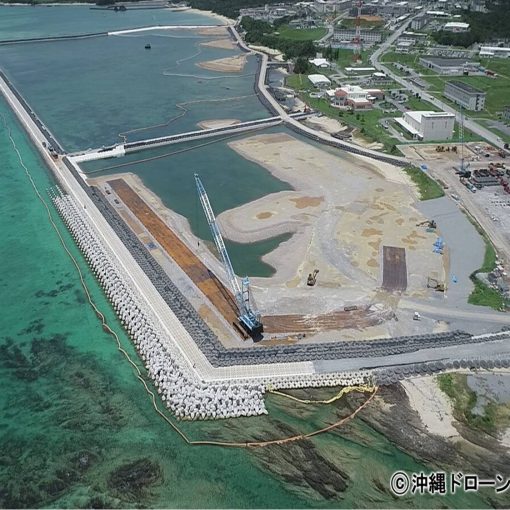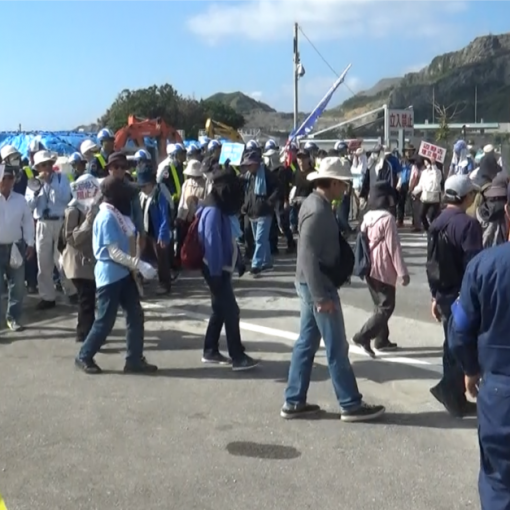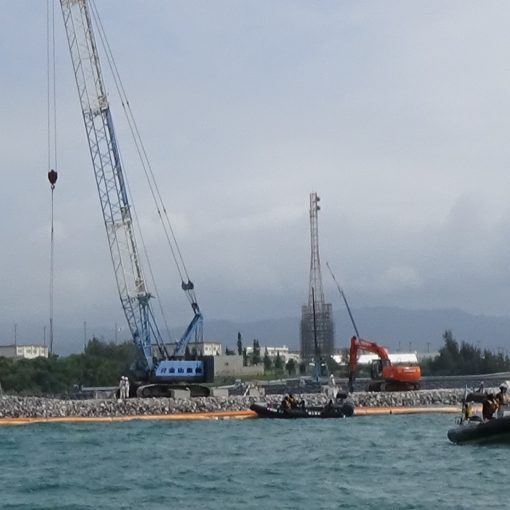It was reported on the 22nd that the government of Japan estimated 10 years to complete landfill for the new military base and additional 3 years to have the runways ready for service, totalling 13 years. The originally planned duration of five years was doubled. The government could not help but admit its substantial delay in the construction due to the discovery of a soft seabed and the anti-base movement by citizens. As a result, Marine Corps Air Station Futenma (MCAS Futenma), which is called “the most dangerous military base in the world”, will not be returned until the mid 2030s.
This catch-as-catch-can game began 1996 when an agreement was made between Japan and U.S on construction of a new military base in Henoko, as a replacement facility for MCAS Futenma. The constuction has not progressed smoothly due to opposition of Okinawa Prefecture and deepened a conflict between the government of Japan and Okinawa local government. Considering the fact that moe than 70% of the U.S. military bases located in Japan are in Okinawa, it is only reasonable to demand that “a replacement facility be located at outside Japan or other prefecture in Japan”. It is also equitable to immediately return MCAS Futenma to Okinawa without conditions for replacement facility because the base was built after WWII by ousting the residents with “bayonets and bulldozers”.
(In front of Camp Schwab Gate)
This coming Friday, the 27th, is the 2000th day for the sit-in protest, approximately 5 years and 5 months since the start on July 7, 2014. At the beginning, only about a dozen people gathered, but now, more than 100 people come frequently for the sit-in. Okinawans’ voice against construction of the new military base has now spread over Japan and abroad, and more people come for support or coverage not only from other areas of Japan but also from other countries around the world.
For confronting a hardline attitude of the government of Japan, citizens have no choice but to resist in a non-violent way and appeal continuously and patiently against injustice of construction of the new base to other areas in Japan and to the world. About 100 citizens come to the sit-in twice or three times a week. As long as they come, the anti-base movement will never end but surely spread to the world.
On this day , 233 vehicles delivered the material.
A rally dedicated for the 2000 days sit-in anniversary will be held on the 27th. Meassages are welcomed.


(In front of Ryukyu Cement Pier at Awa)
Only a small number of citizens, around 10, continued the sit-in all day. Six Go Go Drive members joined and delayed delivery of the material by dump trucks. A national road was continuously jammed with approximately 30 dump trucks, but the trucks couldn’t enter the pier from both ways of the road like they did yesterday. 630 trucks delivered soil/sand to load cargo ships.

(In front of Shiokawa Pier at Motobu Town)
Fifteen members of Uruma Shimagurumi had blocked the dump trucks delivering earth/sand for two hours until the riot police came at 9:20 a.m.
After that, two officers closely attended to one citizen, but the citizens moved around in the pier gounds and continued the protest to delay the delivery. 344 vehicles delivered earth/sand.






